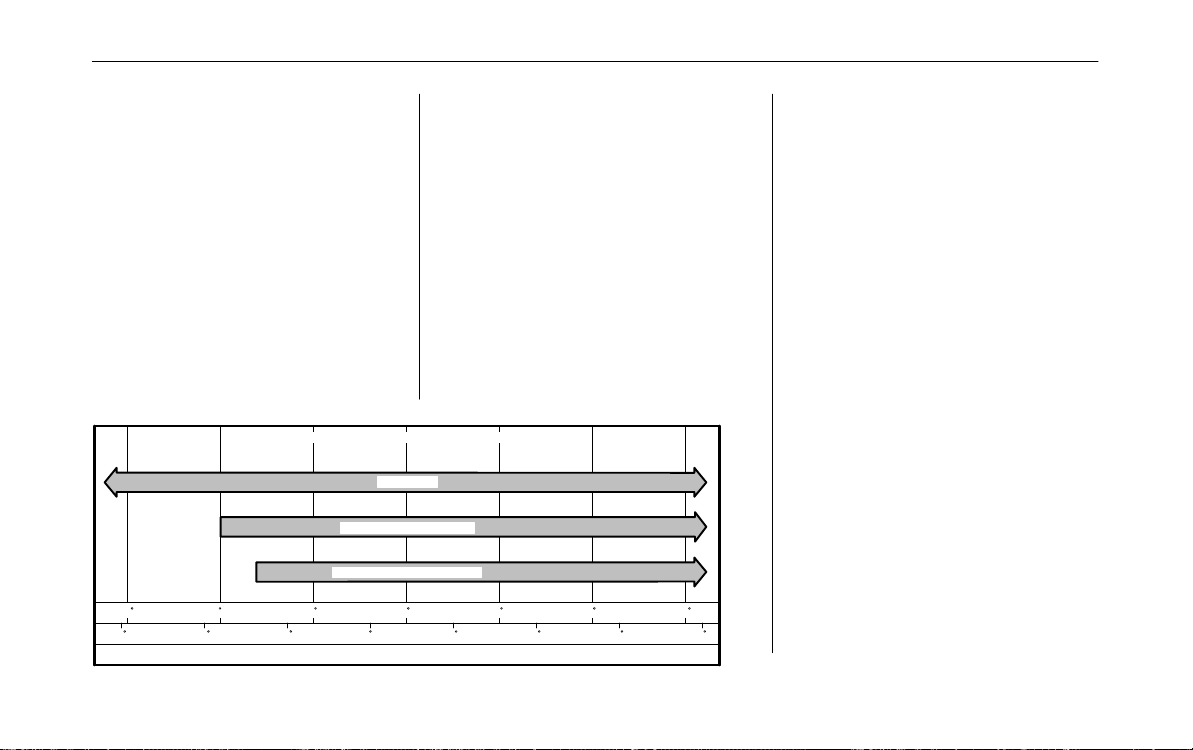Loading ...
Loading ...
Loading ...

213
Care and Maintenance
Oil Viscosity
Engine oil viscosity (thickness) has
an effect on fuel economy. Lower
viscosity engine oils can provide
increased fuel economy; however,
higher temperature weather
conditions require higher viscosity
engine oils for satisfactory
lubrication. To get the best fuel
economy with your vehicle, you
should use a fuel-saving engine oil
of the proper viscosity. These oils
can be found in service stations and
other retail stores. They are
identified by words such as
“Energy Saving,” “Conserves
Gasoline,” “Gas Saving,”
“Gasoline Saving,” “Friction
Reducing,” “Improved Gasoline
Mileage” or “Fuel Saving.”
The chart lists the recommended
engine oil viscosities for the
temperature range you expect
before the next oil change. For
temperatures above 0_F (–18_C),
SAE 10W–30 is the preferred
viscosity grade. If cold-weather
starting problems are encountered
at temperatures below 0_F
(–18_C), SAE 5W–30 viscosity
oils may be required.
Oil Level Check
It is the owner’s responsibility to
keep the engine oil at the proper
level. Check the oil level at regular
intervals (such as every other fuel
stop) and keep it above the
“minimum” level mark.
Remember, your engine may use
more oil when it is new.
The best time to check the engine
oil level is when the oil is warm,
such as during a fuel stop. Shut off
the engine and wait about 5 minutes
for the oil to drain back to the oil
pan. Pull out the dipstick, wipe it
clean, and push it back down all the
way. Now pull out the dipstick and
–20 F 0 F
–30 C –20 C –10 C
20 F 40 F
0 C 10 C 20 C
60 F 80 F
30 C 40 C
100 F
TEMPERATURE RANGE YOU EXPECT BEFORE NEXT OIL CHANGE
VISCOSITY GRADE – AMBIENT TEMPERATURE
SAE 5W–30
SAE 10W–30, PREFERRED
SAE 15W–40, 20W–40, 20W–50
Main Menu
Table of Contents
Loading ...
Loading ...
Loading ...